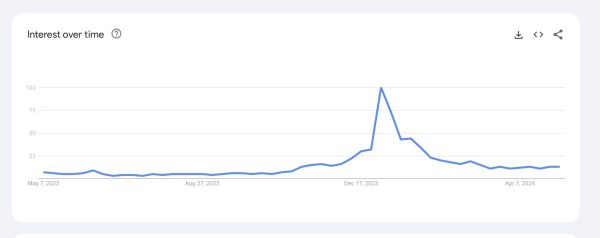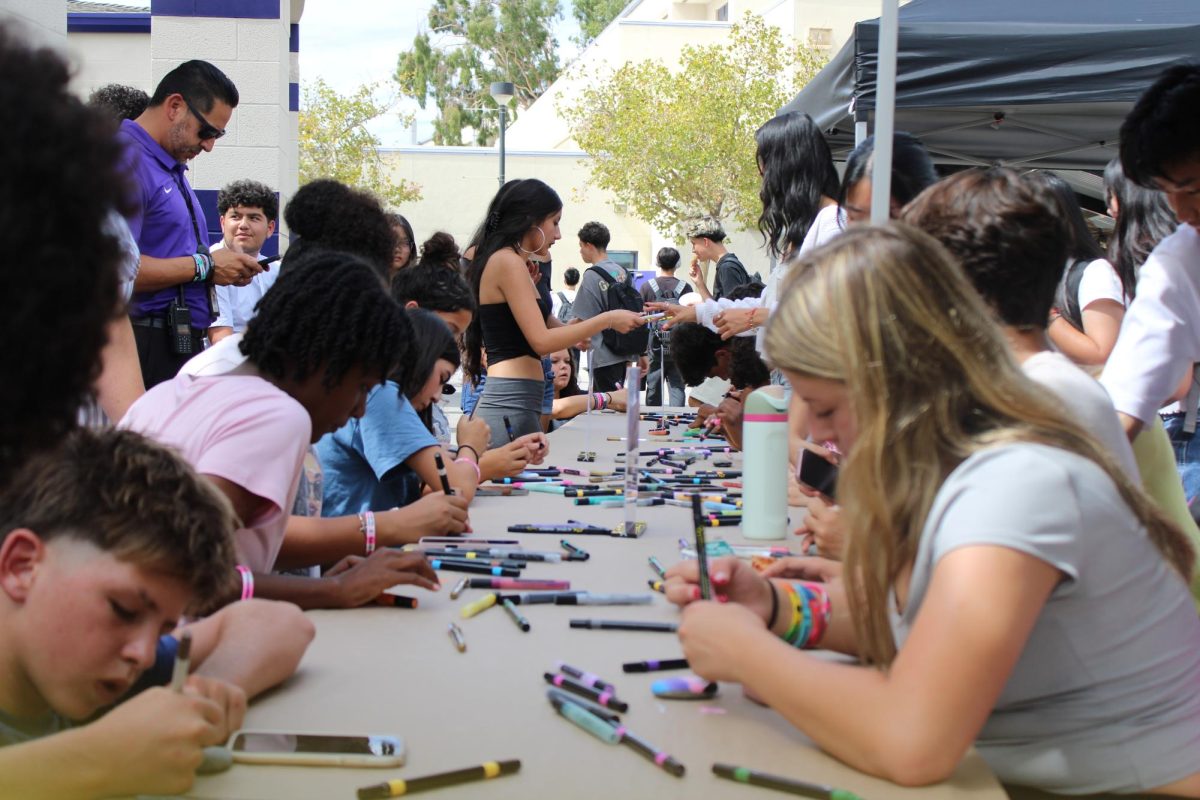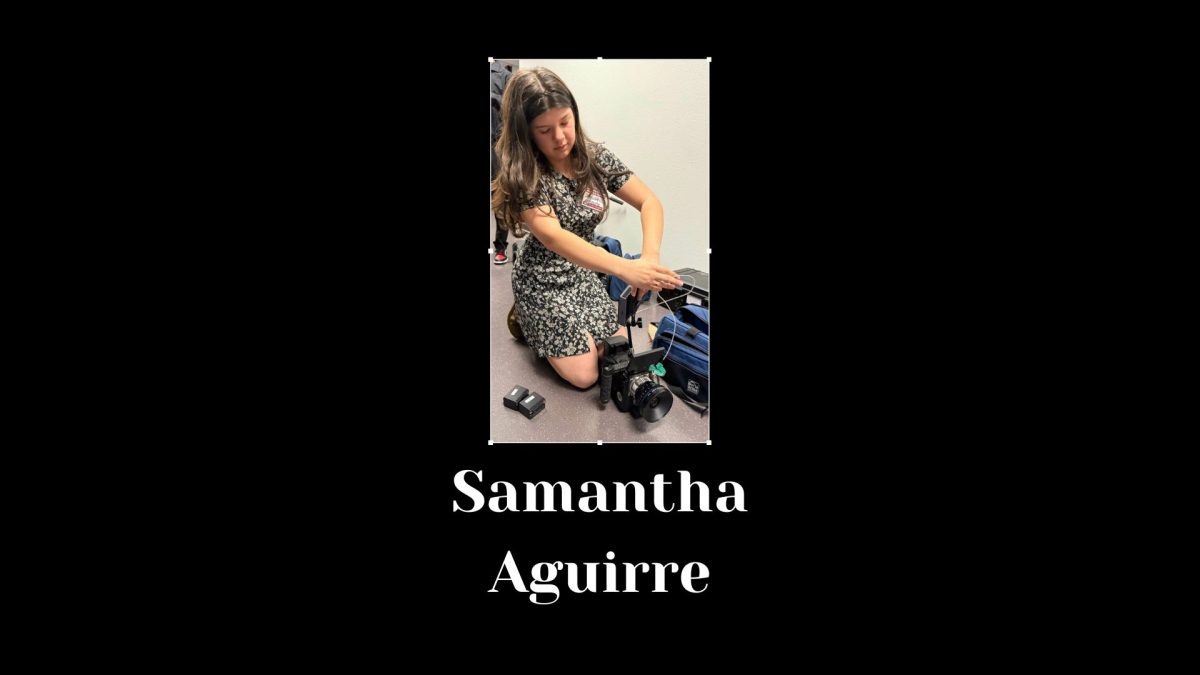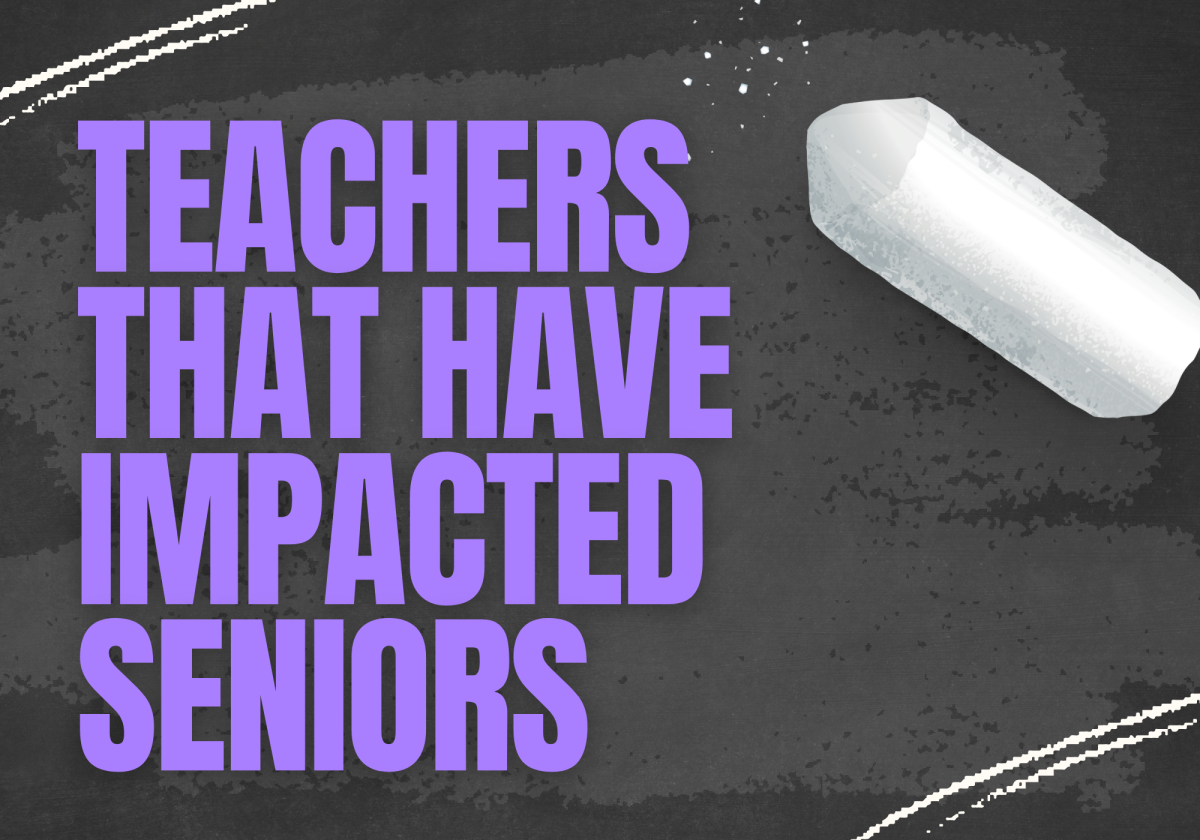It’s everywhere and it seems society can’t ignore it. From viral makeup restocking videos filled with absurd amounts of products, people flocking to stores to purchase Stanley cups in limited shades, children under the age of 13 purchasing Lululemon athletic leggings in various colors, and musician fans spending hundreds of dollars on re-colored vinyls of the same album for the sake of “collecting,” overconsumption is overly normalized.
Overconsumption is absolutely nothing new in the era of digital media and influencers. In the 21st century, it’s being widely shown and somehow normalized it is, yet there seems to be a deeper issue of people finding identity within these products. The lengths some people will go to have a sense of belonging in these so-called “communities” are extreme and even go to dangerous lengths such as attacking other patrons.
In a TikTok Live Stream from Jan. 4, 2024, a man leaped over the counter of an in-store Starbucks to collect an exclusive Stanely-branded Starbucks tumbler. In the video, customers were visibly fearful for their lives after witnessing a man attack a Starbucks employee for the flashy insulated tumbler.
The underlying issue isn’t the fact that people are following a trend; the true issue is that people are feeling the need to be a part of something. This isn’t a new wave of thinking as this piece of the puzzle fits directly into the larger picture of Erik Erickson’s theory of psychosocial stages.
Erik Erikson, a renowned American child psychoanalyst, is known for his theory on the psychosocial developments of human beings. His theory suggests that individuals go through eight stages of psychosocial development throughout their lifetimes, each stage characterized by a unique psychological crisis that must be resolved to progress. Erikson’s work has had a significant impact on our understanding of human development, particularly in the field of child psychology.
Erickson’s most popular theory revolved around the eight psychosocial stages that humans tend to follow in life. Erickson’s theory touches on the key elements humans face psychodynamically in life, one of the key factors being identity vs role confusion. This stage primarily impacts children ages 10-19.
This specific part of life, the adolescent years, that Erikson discusses in his studies is a time of changing both mentally and physically. It allows those living through the role to see who they want to be or what they’d like to categorize themselves as.
As complex as the situation of how people feed into overconsumption is, the cycle of it is so easy to fall into. The main way overconsumption takes place is within a cycle. The cycle takes place in four major phases; these phases are simple yet contain a multitude of niche complexities.
The first stage of this cycle is the introduction to this trend perhaps through a simple YouTube or TikTok video describing a “must-have item” for the year. This leads to the first group of consumers buying the product due to feeling special that they’re the first to be in the know.
The rise typically consists of social media feeds being blasted with images of these trends from fashion influencers or even self-proclaimed lifestyle influencers stating that an item may be their “have of the summer!” or “back-to-school essentials!” These influencers pedal a false narrative of needing these hyper-specific items to fulfill a role as being sociably accepted.
After the great rise of this trend, there seems to be a high peak of it. At this point, some seem to adopt the mentality that “if everyone else is doing it… so should I!”
Malls and shopping outlets become oversaturated with the trending item of the month or even more concerning the week. Duplications or “dupes” as many on social media say are mass-produced in milliseconds and are sold for lower prices typically coming with hours of labor laws being broken across the sea.

Every trend has its life cycle, and inevitably, it reaches a point where it fades into obscurity and becomes subject to scrutiny. At this stage, people tend to turn their heads away from the trend and start criticizing it, eventually leading to the complete condemnation of the trend.
The current cycle of consumer behavior has not only impacted the way people think and act as buyers, but it has also had a significant impact on the economy. The evolution of technology and the widespread availability of information have given consumers access to products at the tips of their fingertips.
As a result, businesses have had to adapt their marketing strategies to engage with consumers in a more personalized way. This leads to a shift in the way goods and services are produced and marketed to let the 21st-century economy thrive.
“By looking at such shops like Shein, Temu, and Amazon, which are very disposable services, we are seeing an increase in these companies’ revenues going to new heights while they don’t care about the worker’s well-being or fulfilling orders,” Mr. Elar Gallagher, an Economic and AP World History teacher at Rancho Cucamonga High School said.
Shops like Shein and Temu rapidly produce items at highly unethical rates. Shein is currently valued at 66 billion dollars which is a striking difference to the 0.27 yaun which translates to 0.04 USD.
“I think that the group that has the most disposable income is typically young adults and teenagers who have access to money for the first time due to work,” Gallagher said.
According to a report in 2023, 17.84% of Shein buyers were within the age group of 18-24. This age group is typically associated with the tail end of Erikson’s theory of identity versus role confusion. The need for the most relevant clothing is typically high in this demographic as people between these ages are entering a new stage of life and social situations.
“The ads and products are very targeted to that demographic because they have the most money to spend and are the longest lifetime consumers,” Gallagher said.
In the end, the only way consumers can change their spending habits and not fall into the trap of unconscious spending habits is to be mindful and find their essentials. Being aware of our impulses and making intentional decisions about our purchases will combat this in the future. By taking these steps, consumers can maintain better control over their spending and align with our values and goals. Ultimately, being conscious of our spending habits allows us to make the most of our hard-earned money and build a more secure future in how we use our products mindfully and spend our money securely.









